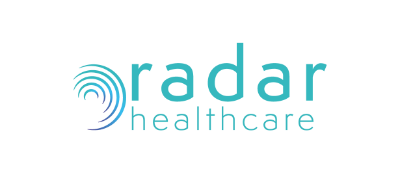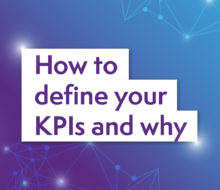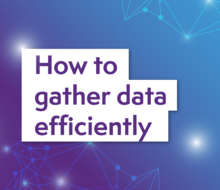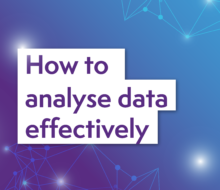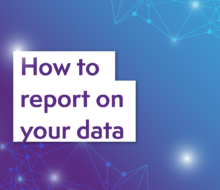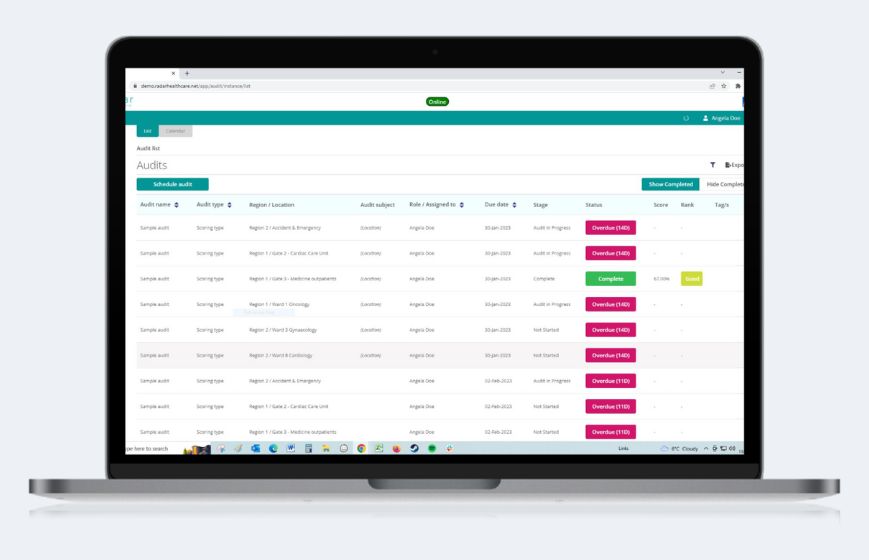How to interpret and learn from your data
18 May 2022
Tags:
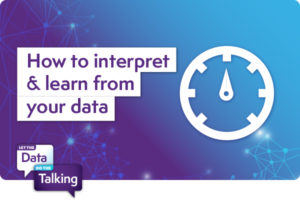 Piecing together data to understand a healthcare incident or event can be difficult, if not impossible when the data is scattered across multiple systems and applications. Furthermore, data captured by teams using separate techniques is unlikely to provide an accurate source of truth on which to base your decisions, resulting in a domino effect of inaccuracies.
Piecing together data to understand a healthcare incident or event can be difficult, if not impossible when the data is scattered across multiple systems and applications. Furthermore, data captured by teams using separate techniques is unlikely to provide an accurate source of truth on which to base your decisions, resulting in a domino effect of inaccuracies.
Having a centralised data management process in place prior to interpreting data can give your teams a solid foundation to work from, resulting in better staff engagement and patient safety.
So, what is data interpretation and how can we learn from it?
Data interpretation is the process of reviewing data to help assign meaning and arrive at a relevant conclusion in order to make recommendations.
There are numerous methods for interpreting data, but they are typically classified into four categories:
- Gathering data
- Develop findings
- Draw conclusions
- Make recommendations
Because data interpretation is where you should look to draw conclusions, by this stage you should have already gathered your data and competed your data analysis.
So, let’s see what you can do to make the most of your data interpretation.
Identifying trends made easy
As we learned in our ‘Let the Data Do the Talking’ blog series, manually sorting through data and spotting trends takes time, and as a consequence, often gets sacrificed by healthcare workers for the more pertinent tasks. Additionally, these trends are not always obvious and may require an expert eye to detect anything out of the ordinary.
You’ve probably heard of the terms ‘quantitative’ and ‘qualitative’ data, which are data collection methodologies; these methods are great in other contexts, but in a healthcare setting, they require a lot of time to work and dedication in order to get it right. We understand how valuable your time is, so we’re here to help you eliminate time-consuming processes so you can focus on what really matters.
By logging data and gaining insight from old and new data with a system like Radar Healthcare, you can focus on the important stuff: why certain trends are occurring.
When a care home records a series of resident falls, for example, Radar Healthcare creates data visuals in the background, allowing you to see trends automatically by location, time, and those involved while freeing up your time and energy to focus on the patient.
Moving from an ‘Inadequate’ to a ‘Good’ CQC rating in such a short period of time is a significant achievement and the implementation of Radar Healthcare has been instrumental in this. We have an overall picture of the quality of care we are delivering; we can see where things are going wrong but more importantly, we have access to data and information which helps us prevent things from going wrong in the first place. It has provided the team and the CQC with confidence that we now have the systems in place to deliver the highest standard of care.

Connecting you to better outcomes
Because Radar Healthcare hosts everything in one place, you can focus on what you really need to know and reach these conclusions quickly. It also means that your team can have confidence in what they’re seeing and create their own workflows to avoid duplications and keep track of everything.
Relying on manual processes and spreadsheets meant that tracking actions and lessons learnt were difficult to manage for Liaise Group Limited. Incidents sometimes took up to 3 days to be picked up which could result in critical actions being missed.
Having an integrated platform will not only help you and your teams store information consistently, but it will also help you organise data into digestible parts, with workflows that you can then interpret based on your own needs.
What’s more is that Radar Healthcare can integrate with other systems through APIs and protocols to ensure that even when you do use different applications, the data can be recognised by Radar Healthcare as one coherent set for you to interpret, learn and make recommendations based on your data.
Personalised analytics for every occasion
Visualisation of your dataset is a key aspect of data analysis and interpretation. We make it as easy as possible to create visual graphs so that anyone can understand and deliver summaries at any given moment.
We also understand the value of personalisation, especially in roles that require more knowledge of the granular detail to get on with their day job. That is why we have a tagging option that helps to group themes and related datasets for ease of reporting, and you can see the data that you want to see with our customisable dashboards.
“Radar Healthcare saves us a huge amount of time reviewing and analysing quality and compliance data for events such as accidents and incidents or clinical data around wounds and medication errors” – Scott Finnigan, Thistle Healthcare
Seeing results and achieving goals
As we mentioned in our KPI blog, your data should always be focused on what you want to achieve, and KPIs should be established from the very beginning.
When you can see that something is working, it’s a great motivator to keep going. The same is true for data interpretation: making the right decisions will encourage your team to repeat these processes and achieve better results.
Learn from your data with Radar Healthcare
For more information on how our modules can help with your data processes for improved patient safety, get in touch today.
Book a demo
